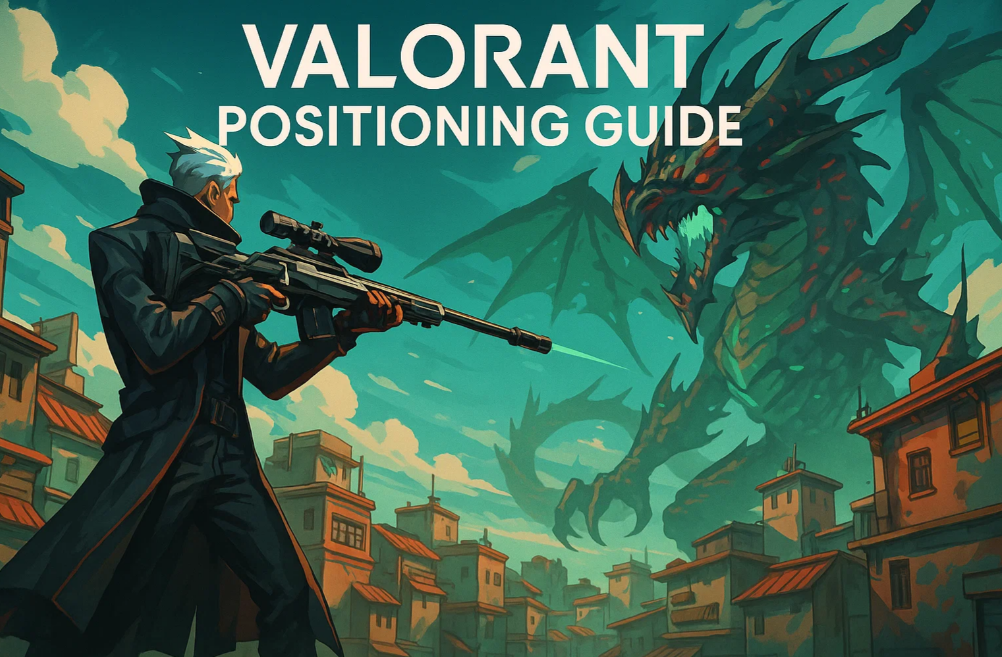Valorant Positioning Guide: How to Master Angles and Win More
If you’ve ever felt like you’re always the first to die or that your holds fall apart the moment enemies push your site—don’t worry, you’re not alone. While many people assume they are good at Valorant Positioning, this guide is created to help you fix your issues and play better.
Sure, flashy aim clips look cool on YouTube, but smart positioning is what separates the good players from the game-changers. Strong skills in smart positioning, spotting when opponents swap lanes, and handling tough post-plant battles will help you win more games and increase your rank, whether you’re struggling to get out of ELO hell or aiming higher.
Stop blaming your potato aim and positioning struggles, because not every whiff is your fault—sometimes it’s the RNG punishing your loadout. The game-changer? U7BUY provides ready-to-use Valorant accounts with top-notch skins to help you show off in every fight.
Let’s dig into the core strategies that this Valorant Positioning Guide breaks down, from basics to advanced mind games.
The Fundamentals of Smart Positioning
Good positioning begins before the round even starts. Ask yourself:
- Where will I fall back if pressured?
- What utility does the enemy team have?
- What angles am I most vulnerable to?
Many low-elo players pick a corner and pray for impact. But as this Valorant positioning strategy teaches, the goal isn’t just to get a kill—it’s to survive long enough to help your team retake or secure the bomb site.
For example, if you’re playing solo on B Bind and know a 5-man rush is coming, don’t anchor and die. Either fall back and play for retake or push for early info and rotate. Dying early without value is a guaranteed ticket to a lost round.Not just Valorant’s smart positioning skills, but also buying a Valorant booster( upgrade your guns) should be your main focus in your positioning journey.
Standard Angles vs. Off-Angles: Which to Use and When
A standard angle is safe and gives you cover, but it’s also expected. Most enemies will pre-aim these spots. On the other hand, off-angles are less common and unpredictable, but they can be riskier and harder to escape from.
Here’s the trade-off:
- Use standard angles when you can coordinate with teammates (e.g., playing crossfires or trades).
- Use off-angles when the enemy is low on numbers or you’re playing an agent like Jett or Reyna that can disengage after a kill.
A big takeaway from the Valorant Positioning Guide is that protected off-angles—those that allow an escape route after contact—offer the best of both worlds. An example would be holding a weird position just outside Market on Ascent where the enemy doesn’t clear but you can instantly duck back into cover.
Understanding Angle Advantage and Peeker’s Advantage
Most low-ranked players don’t understand angle perception advantage—aka, how early an enemy sees you based on how close you are to the wall. Having pixel-exact corner control is crucial—even a small peek will delete you before you saw the enemy.
So what do you do?
- Don’t hug corners.
- Play a few steps off the angle.
- Peek and unpeek (aka jiggle peek) every 3–5 seconds to stay unpredictable.
Peeking in and out not only prevents you from being pre-aimed—it also allows you to exploit the infamous peeker’s advantage, which gives the moving player a 50–70ms head start due to server lag and reaction time.
Communication and Crossfire Setups
This guide makes a solid case for one simple truth: Valorant is a team game. Even if your teammates are “microphone-phobic potatoes” (as the video puts it), you can still play off their actions.
If your teammate is constantly swinging first, use that to your advantage by holding a crossfire or swinging off their contact. Even without communication, reading teammates is a must-have skill at every rank.
Call out your angles. Ask for utility. Set up crossfires when possible. One solid crossfire setup is more effective than most duelists dry peeking an enemy with their mic muted.
How to Be Unpredictable and Break Patterns
Valorant Positioning Guide defines unpredictability in three levels:
- Pre-round – Where you choose to play, how you set up utility, and how you plan your fallback. Always have a purpose behind your starting position.
- During gunfights – If you move around a lot, you give enemies an opportunity to be weakened. Think of pro players like Asuna who keep shifting spots in a duel, making it nearly impossible to land shots on them.
- Map-level unpredictability – Think flanks, fake rotates, or repositioning after a kill. Kill someone A site, then immediately sneak through mid to B before the enemy can track your location.
Unpredictability isn’t about chaos—it’s about calculated misdirection.
Positioning in Post-Plants: Agent Matters
Not all agents should play post-plants the same way. A controller like Brimstone should be far back, ready to stall the defuse with mollies. A duelist like Phoenix should be closer, ready to flash and delay a push. The Valorant Positioning Guide suggests:
- Utility-based agents = play further, delay defuse.
- Aggressive agents = play forward, stop pushes.
A common mistake? Setting the spike back in the corner so it is not open yet. Insertion of the spike should be into a corner, away from the path—It gives your team more flexibility and makes post-plant defense much easier.
Final Thoughts: Positioning Wins Rounds
The most underrated skill in Valorant isn’t aim—it’s awareness. And awareness begins with positioning. This Valorant Positioning Guide arms you with everything you need: knowledge of angles, when to peek, how to set up crossfires, and how to avoid being predictable.
Whether you’re solo queueing in Gold or grinding to Radiant, mastering positioning will instantly boost your performance. Because when you stop giving away free kills, everything else—aim, utility, and clutches—gets easier.
Now, go rewatch your VODs and see where you stood last round. Bet you’ll find something to improve.


